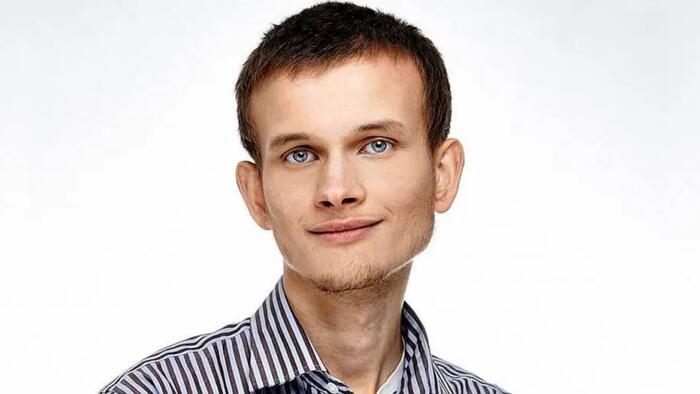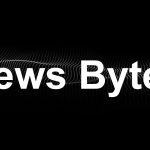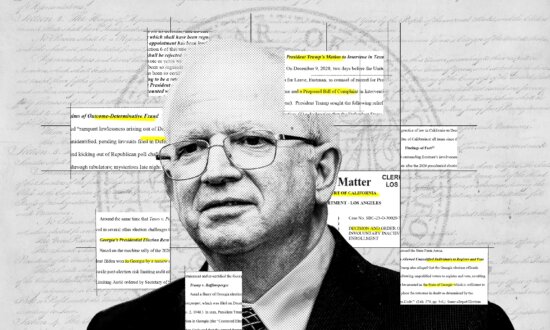This article is a text transcription by the Wublcokchain team of the Chinese podcast featuring Ge Rujun and Vitalik. Original video link:
Personal Introduction of Vitalik Buterin
Vitalik Buterin was born in 1994 and is a Canadian programmer, writer, and co-founder of Ethereum, the world’s second-largest blockchain platform. He had his first computer at the age of four, created an encyclopedia about rabbits at seven, was recognized for his talents in mathematics and urban design at ten, and was capable of complex mental arithmetic. By the age of twelve, he was already able to write games in C++. Between the ages of thirteen and sixteen, he was deeply engrossed in the video game World of Warcraft, until the game publisher Blizzard removed a key ability, “Life Siphon,” of his favorite Warlock character. This event profoundly affected him, leading him to reflect on centralized control and eventually sparking his interest in blockchain technology.
By the age of twenty-four, Vitalik’s net worth was already considerable, and he was ranked 22nd on Fortune magazine’s list of the most influential people under 40. Despite his significant achievements in technology and business, Vitalik emphasizes that every moment in life is precious, just like every block in a blockchain, and nothing should be erased, as everything is worth cherishing.
For Vitalik, his life experiences from birth to the age of eighteen were incredibly rich, making it difficult to pinpoint what was most important. Every event, every experience, had a significant impact on him, helping to shape who he is today. For listeners, his story is not just about the growth of a tech genius but also about a perspective on life and the pursuit of innovation.
Views on Elections
Host: What are your thoughts on the recent Taiwanese election that just concluded?
Vitalik: There’s a saying in English, “No news is good news,” meaning that if nothing particularly bad happens, that in itself is good news. Many issues have emerged in recent elections and democratic processes, such as in the United States, where Trump refused to concede after losing, leading to the Capitol being stormed. Many people were worried about bad things happening or severe misinformation. But from the outside, at least, it seems like nothing particularly bad happened in this election. Though there are always some problems, it looks healthier compared to the United States.
Host: Indeed, your Chinese is very fluent. Our election involved three sets of candidates. Is the U.S. election also a three-way situation?
Vitalik: Not in the U.S., because there’s a very stable two-party system there. There’s an economic law called Duverger’s Law, which states that in traditional voting systems, eventually two main parties will form, making it hard for a third party to come in. In the U.S., the two main parties are the Republican and Democratic parties, and other small parties like the Libertarian Party and the Green Party receive very little support. The system in the U.S. is not the result of the founders’ design but the result of incentive mechanisms.
Host: Why did you fall in love with blockchain? Is it because new forms of democracy can be built on the blockchain?
Vitalik: Indeed, blockchain offers the possibility of implementing new forms of democracy. For example, the Ethereum Foundation website has tutorials explaining how to build democracy on the blockchain. This shows we can explore new versions of democracy and find better ways of governance. Blockchain technology makes this exploration possible.
As the founder of Ethereum, what does democracy represent to you? What’s the relationship between the values of democracy and blockchain?
Bitcoin, as the first instance of blockchain technology, had a very clear initial goal: to create a digital currency — Bitcoin — with a total limit of 21 million. This system was not just a payment system but also seen as digital gold, representing a dual innovation of a new payment system and asset. Satoshi Nakamoto introduced these two concepts through Bitcoin: a new type of asset that can be directly created on the internet and have value, and blockchain technology — a decentralized consensus method. This method allows multiple network nodes to maintain a decentralized database together, recording the number of coins everyone holds.
With the launch of Bitcoin, people began to explore other potential applications of blockchain technology beyond payment systems. In 2010, Namecoin emerged as a pioneer project using blockchain to achieve a decentralized DNS system. Subsequently, more blockchain-based applications were developed, such as colored coins and Mastercoin, exploring the possibility of issuing custom assets on top of Bitcoin.
My early involvement in the Bitcoin community and the creation of Bitcoin Magazine gave me a deep understanding of these platforms. Despite recognizing the value of these concepts, I realized their implementation was limited. This led me to think about creating a blockchain with a general-purpose programming language — Ethereum — to go beyond monetary applications and explore the broader possibilities of blockchain technology.
Gavin Wood, one of the co-founders of Ethereum, although not deeply involved in Bitcoin, joined Ethereum from the perspective of open-source technology. This background difference fostered Ethereum’s unique perspective as a combination of open-source software and decentralized storage capabilities. Ethereum’s goal was to adapt the concept of open-source software to the 21st century, especially in areas like collaboration and social media.
The core of blockchain technology is decentralization, but as we explore uses beyond currency, how to manage and upgrade these applications becomes a new challenge. We explored various democratic methods, hoping to achieve the goal of users collectively controlling the fate of applications. This exploration is not limited to macro democracy in national or city political systems but extends to micro-democracy — such as likes and voting mechanisms on social media platforms — showing the potential application of democratic concepts at multiple levels.
Are there any cases in Ethereum that practice democracy?
Over the past few decades, with the development of blockchain technology, we have witnessed a profound exploration of the concepts of democracy and the philosophy of freedom, especially the distinction between private and public property. Blockchain technology not only protects individual rights but also provides a secure space where what individuals own does not disappear due to changes in others’ opinions. This technology offers a guarantee for private property, ensuring that people can freely create, hold, and disseminate value on the internet.
For example, from my personal experience, I maintain a blog, and the content is published in two places: one is the traditional website vitalik.ca, and the other is vitalik.eth, which uses the decentralized file storage system IPFS and Ethereum-based ENS. When my VPS server provider shut down, the vitalik.ca site was no longer available, but vitalik.eth remained. This demonstrates how blockchain technology can make content permanently accessible, unaffected by a single service provider.
Furthermore, the concept of public property is also embodied and developed in blockchain technology. Taking Ethereum as an example, its protocol evolves continuously, such as the transition from Proof of Work (POW) to Proof of Stake (POS), significantly reducing electricity consumption. This process involves community collective decision-making, reflecting the decentralized nature of public property management.
The development of blockchain technology has also given rise to Layer 2 projects like Optimism, which explore new ways of financing public goods through experimental funding models, such as retroactive public goods funding. These experiments are not only about technological innovation but also involve how to manage and develop public resources in a more democratic and open manner.
In summary, blockchain technology provides a unique perspective for us to reconsider the philosophy of democracy and freedom, especially in handling the relationship between private and public property. By safeguarding individual rights while promoting the development of public goods, blockchain technology shows its tremendous potential in building a fairer, more decentralized society.
What tools or mathematical methods in the physical or virtual world can help us achieve consensus?
Over the past 50 years, many scholars have seriously studied the advantages, disadvantages, and characteristics of different voting systems, one famous outcome being Arrow’s Theorem. Arrow’s Theorem states that if there are at least three candidates in a voting system, that system will inevitably encounter certain issues. For example, suppose initially there are two candidates, A and B. The introduction of a new candidate C might lead to a situation where A, who would have won, loses to B. This seems very illogical theoretically because the choice between A and B should be unrelated to C’s joining. However, such problems are unavoidable in traditional voting systems.
One method attempting to address this issue is Ranked Choice Voting, which requires voters not only to choose their favorite candidate but also to rank the candidates. While Ranked Choice Voting can solve some problems, it also has its flaws. Arrow’s Theorem reveals an important assumption — ordinal preferences, meaning the voting system can only recognize voters’ relative preference order for candidates without distinguishing the degree of preference.
However, if the voting system could include richer information, such as through Approval Voting, allowing voters to support one or more candidates instead of merely ranking them, then it is possible to circumvent some of Arrow’s Theorem’s limitations. The advantage of Approval Voting is that it does not require voters to rank candidates but allows them to express support or non-support for which candidates.
Moreover, Quadratic Voting introduces a more complex but interesting mechanism, allowing everyone to have a certain number of votes to distribute freely to any candidate, whether for or against, and to vote multiple times for the same candidate. However, the number of votes required grows quadratically with the number of times voted, allowing for a more detailed reflection of the strength of voters’ preferences.
Quadratic Funding is another mechanism similar to Quadratic Voting, used to address the issue of funding public goods. It uses a matching formula to allocate funds based on the number of donations and the number of supporters, aiming to promote broader and more democratic funding of public projects. In the Ethereum ecosystem, Gitcoin Grants has already utilized the Quadratic Funding mechanism to support various projects, demonstrating the potential and effectiveness of this mechanism in practical applications.
Is Zuzalu related to these mechanisms?
In recent years, the concept of creating new cities, new countries, or physical communities has gained increasing attention. Many people have discussed these ideas, but few have actually implemented them. Against this backdrop, I conducted an interesting experiment in Montenegro to explore the feasibility of these concepts in the real world.
This experiment attracted 200 participants from various fields, including developers and researchers from the Ethereum and blockchain domains, experts in the biological sciences (such as life extension and synthetic biology), and enthusiasts of governance studies and related topics. We lived together in Montenegro, a small country in Eastern Europe, for two months, forming a temporary city, or a Pop-up City.
One of the experiment’s goals was to apply our favorite technologies to this temporary city. One example is Zupass, a domain-proof-based identity system that allows people to prove they are members of the Zoosaloo community without revealing their specific identity. Zupass supports both offline and online verification, such as the online voting site Zoopoll, allowing community members to participate in voting anonymously, protecting privacy while ensuring the validity of votes and the principle of one person, one vote.
Additionally, we experimented with biohacking and life extension in the biological domain, showcasing the potential of using technology for social innovation. The Zupass project was born out of the Zoosaloo experiment in Montenegro, and now more projects and individuals are starting to use Zupass, proving its value as a practical tool.
I believe zero-knowledge proof technology is crucial for an open and free future because it can address censorship and fake accounts on social media and other platforms without sacrificing privacy. With zero-knowledge proofs, people can prove their credibility without revealing their specific identity, offering new possibilities for privacy protection and free speech. The Zoosaloo experiment demonstrated the application of this technology in actual social interactions, and I hope mainstream social media and other platforms will adopt this technology in the future to promote freer, safer social interactions.
What role can technology play in democracy and the process of resource distribution? Do you have any visions or directions?
With the maturation of blockchain and related technologies, especially zero-knowledge proofs, we now have more opportunities to apply these concepts in mainstream domains, not just within the blockchain ecosystem. Previously, technologies like zero-knowledge proofs might have been academic concepts or feasible only in specific scenarios, but now, they have become powerful enough to be executed quickly on mobile devices, and the developer experience has significantly improved, enabling non-cryptographers to easily create applications based on these technologies.
This technological advancement offers us an opportunity to start exploring and implementing blockchain-based innovative concepts on a smaller scale, such as in cities, universities, non-profit organizations, or even governments like Taiwan that are open to open government technologies, such as Quadratic Funding (QF). By experimenting in these areas, we can observe and evaluate the actual effects of these concepts in the real world and then gradually expand their application scope.
For example, the concept of Quadratic Funding (QF) can be applied in city management or financing of public projects, promoting more democratic and transparent distribution of funds. Moreover, zero-knowledge proof technology can be used to protect user privacy while ensuring the security and reliability of the system, which is especially important for applications like public identity systems or online voting.
Just like the Zoosaloo experiment I conducted in Montenegro, these small-scale experiments not only validate the feasibility of the technology but also explore how to promote these technologies on a broader societal scale. Now, as these technologies become more mature and user-friendly, we have the opportunity to explore and experiment in wider fields, thereby pushing society towards a more open, fairer, and safer direction.
I am optimistic about the future and believe that with the advancement of technology, we will see more innovative applications based on blockchain technology in government and public service domains. This is not only a victory for technological development but also an important step towards a more open and democratic society.
* * *
Follow us: Twitter: https://twitter.com/WuBlockchain Telegram: https://t.me/wublockchainenglish
Loading…












